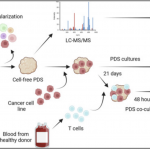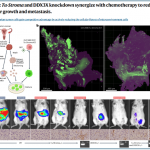3D synthetic scaffolds
Synthetic scaffolds that mimic the true human environment, available for research centers and companies partnering with Iscaffpharma.
3D printing models, our process
The patented proteins are used in synthetic scaffolds that will allow a cost effective platform to improve success rate in clinical development of treatments for aggressive cancer. The synthetic cancer models that mimic the true human environment are available for research centers and companies partnering with Iscaffpharma.

Selecting Proteins
Target identification
Screening of NCEs on gene expression and other factors

3D Printing
Synthetic scaffolds
Ink/Scaffold available to partners
Patient derived scaffolds
Solid tumours
Restricted number partners

Scaffold mimicking human environment
Precision
Personalized treatment
Liquid biopsy
Cell growth in synthetic & patient derived scaffold
The high resolution pictures show cancer cells re-populating both the human and the 3D printed cancer models that mimic the true human environment. Iscaffpharma provides analyses of cancer reporter cells for drug resistance, proliferation, differentiation, stem cell features and epithelial mesenchymal transition (EMT) in both 3D printed and human scaffolds.

Cell growth in 3D printed scaffold

Cell growth in human scaffold
This project has received funding from the Eurostars-2 joint programme
Iscaffpharma and collaborators receive funding for Eurostars project with a total budget of 1.24 M€
Gothenburg University, RISE and Iscaffpharma received the prestigious grant support and are partnering with AstraZeneca (LSE/STO/Nasdaq: AZN), for a project to develop synthetic 3D-models that recapitulate the tumour microenvironment for cancer drug discovery.







